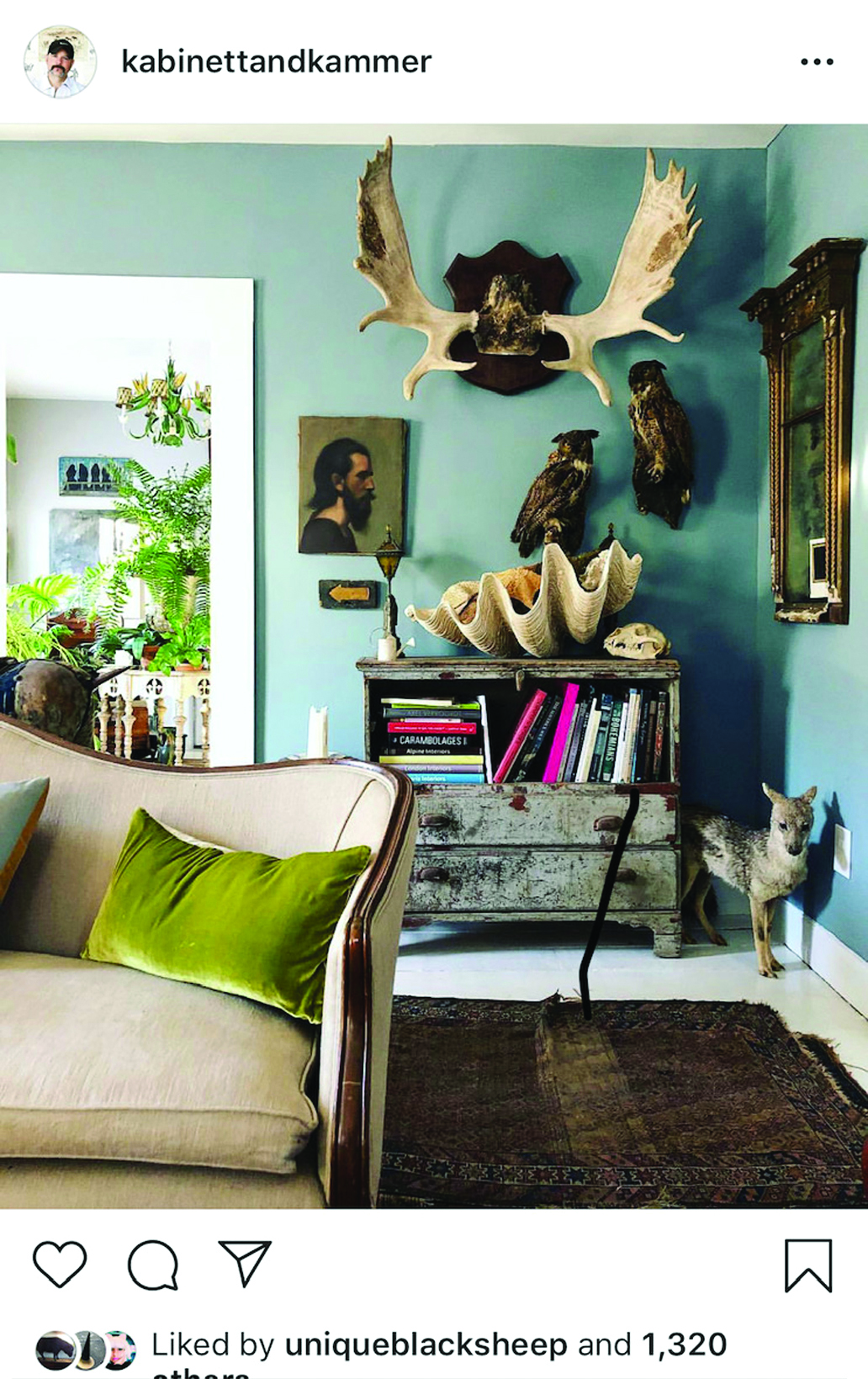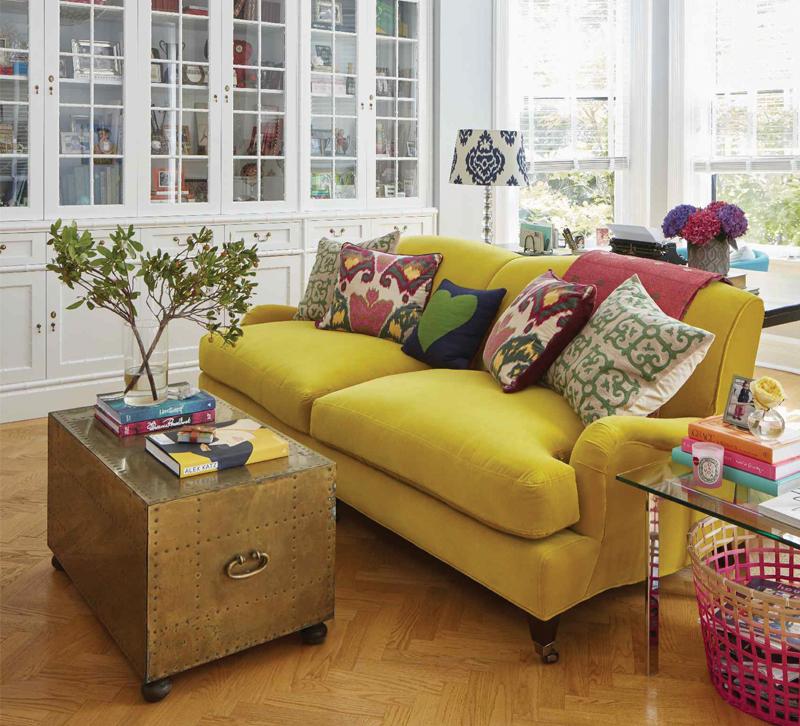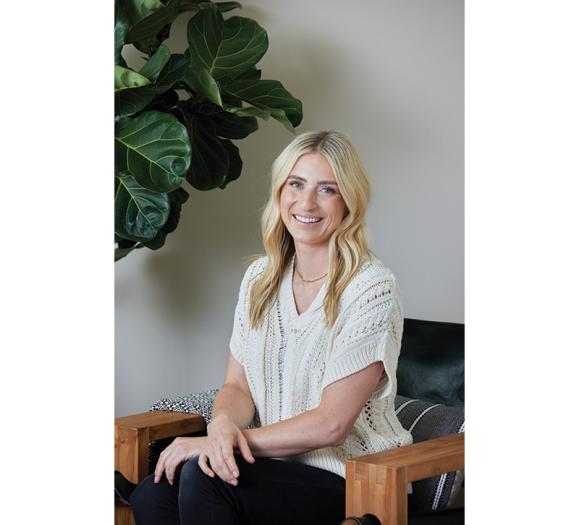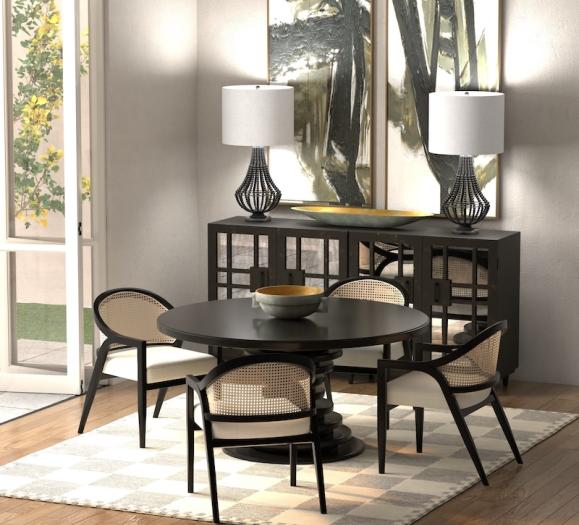Social media is a key strategic component for any business. But how does it intersect with the interior design industry? We asked two experts for their perspectives on growing your social media following.
The Independent Designer
Interior designer, retailer, artist and collector Sean Scherer is known for his “masculine maximalism” style that calls upon his love of natural history, texture and Americana. His Andes, NY, shop, Kabinett & Kammer, showcases a range of unique finds. For Scherer, his social media presence of 10.5K Instagram followers is an extension of his life, just as his interior design aesthetic is an extension of his personal passions.
Scherer first started with Facebook, but never felt it reached the right audience. “I found Instagram was more direct to a like-minded community of people interested in design,” he says. Many designers and furnishings retailers find Instagram is a good match for their work because it is based on visuals. In fact, “The Gram” topped one billion active users earlier this year.

In the beginning, Scherer posted three times a day and watched to see which posts received the most feedback. “Now I do just one a day, usually in the morning,” he says. “I know there are all kinds of algorithms about best times to post, but I think it’s important to post regularly, find a time that works for you, and your audience will find you once you’ve built that initial base.”
Scherer acknowledges that for those in a creative field, there are risks involved with growing your brand’s reach on social media. “Musicians, artists and designers are all dealing with the issue of protecting their intellectual property,” he says. “You have to be aware that once it’s out here, you can’t control it. You might be giving away free advice, so you have to accept that is part of our online world.”
If you post a recently completed room, for example, you can expect followers to ask, “Can you tell me what that paint color is?” more often than “I’d like to hire you for a project.” But the exposure and name recognition are the long-term payoffs. Large followings can also gain the attention of media outlets who want expert insights, and that may lead to new client inquiries.
A Bigger Picture
Designers can gain helpful tips to apply to their own social media strategies by examining those of major industry players like Better Homes and Gardens’ BHG.com. With 1.5 million Instagram followers and almost 4.8 million on Facebook, BHG.com connects with followers seeking inspiration for their living, entertaining and outdoor spaces.
BHG.com’s Social Content Specialist, Kait McKinney, says her group’s strategy starts with a clear mission “to empower our follower to sharpen her vision of the life she wants to live.” From there, they reach audiences across several social media platforms. On Instagram, her driving force is to create “a beautiful, curated reflection of the BH&G brand aesthetic. Our feed is a balanced mix of our own images as well as ‘regrams’ of the amazing creative ideas being generated by our influencers, brand fans and followers.” So while BHG.com encourages creativity and attainable home projects, it also helps promote the work of professionals in the field. “Instagram is such a powerful way to interact with our followers and gain more insight to what they love most about the content we’re creating,” she says, adding, “We primarily use Facebook as a traffic-driving platform, and we consider ‘shares’ to be the most powerful metric. It signals to us what our audience is wanting more of and what they want to share.”
For a large entity like BHG, social media strategy is driven by data, but McKinney explains it’s more than just counting the “likes” on each post. “Our data is part of an audience-first mission of identifying what is resonating with our followers and establishing our performance benchmarks,” she says.
Whether you’re an online behemoth or just now dipping a toe into the social media pond, instant feedback is the prime benefit of having a social media presence. “One of the things that surprises (and inspires) us is how quickly we get feedback from our fans,” McKinney says. “We know very quickly if the audience likes or dislikes content we publish on social media.”







